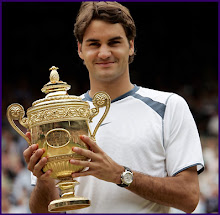
What the dynamic Spaniard’s game can teach you.
1. Don’t play the score. Nadal has become one of my favorite players to watch because of his sensational attitude. Whether he’s up 5-0 or down 0-5, he maintains his intensity. The only thing on his radar screen is winning the next point. If Nadal plays it well and wins a hard-fought exchange, out come the fi st pumps. That’s the greatest approach to have as a tennis player. If you allow the score to influence your demeanor, it will have negative repercussions on your game. And it’s not just if you’re losing and getting angry. Relaxing with a lead and thinking prematurely about an easy win can be equally destructive. Nadal takes nothing for granted. He never phones in a point, and he competes hard until the last point is over. Develop that kind of mind-set and you’ll win more matches.
2. Attack a weakness. Being a lefty, Nadal has the distinct advantage of pounding his best shot—the crosscourt forehand—into his opponent’s backhand, which tends to be their weaker side. Nadal puts a tremendous amount of topspin on his forehand, so the ball jumps up high on a righthander’s backhand, making it an uncomfortable shot to deal with. Since many players like to run around their backhands, Nadal will keep them honest by going strong to their forehands to open up space on the other side of the court. What makes Nadal unique in this regard is that he’s absolutely relentless. He’ll repeatedly hammer away with his crosscourt forehand until his opponent crumbles into submission. It’s not fancy, but it’s hard to argue with his results. The most basic yet effective strategy in tennis is to pit your strength against your opponent’s weakness. The best players are the ones who can construct a majority of their points on those terms.
3. Make adjustments. Nadal is dominant on clay, but he can change his game to compete successfully on fast surfaces, as he proved with his run to the Wimbledon fi nal this year. Instead of playing from 8 to 10 feet behind the baseline, Nadal will move up further in the court and take the ball earlier. He’ll also fl atten out his backhand to get more penetration and use the speed of the surface. On clay Nadal will play it safe and hit more kick serves, while on a fast court he’ll toss the ball farther out in front of his body and try to crack some bombs to win a few more free points. So take note: You may have a certain style that you prefer, but if you want to win on all surfaces and against various types of opponents, you must be adaptable. Perhaps that means being more aggressive with your shots or pulling back to allow your opponent to self-destruct. Having versatility will make you a much more formidable opponent.


No comments:
Post a Comment